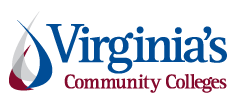Inquiry: The Journal of the Virginia Community Colleges
Abstract
Community colleges offer an array of programs designed to help students meet different goals. Noncredit education provides training for students seeking targeted, often shorter, courses for personal and professional enrichment (Cohen, Brawer, & Kisker, 2014). Many community colleges are now increasingly emphasizing noncredit workforce education as they support regional workforce development efforts and strive to meet the needs of their local industry partners (Van Noy, Jacobs, Korey, Bailey, & Hughes, 2008). Despite the millions of students enrolled in these courses and their potential to generate revenue for the institutions delivering programs, Voorhees and Milam (2005) refer to noncredit community college education as the “hidden college” and existing research on noncredit offerings is limited.
Blending community college credit and noncredit programs with thoughtful and intentional strategies will benefit the students and the institutions. Van Noy, Jacobs, Korey, Bailey, and Hughes (2008) made five recommendations for strengthening noncredit education based on their research. They included the need to expand state funding with clear goals, to increase coordination of credit and noncredit offerings, to promote articulation of noncredit courses into credit programs, to establish non-degree forms of validation for noncredit programs, and to capture more information regarding employment outcomes resulting from noncredit training. These recommendations provide the framework for an analysis of current VCCS programming.
Recommended Citation
Samuels, K., Estes, M., Eckman, H., Gillerlain, K., Jenkins, S., Miller-Edwards, W., Reinauer, O., & Walker, N. (2019). Blending Credit & Non-Credit Courses: Best Practices, Opportunities, Barriers. Inquiry: The Journal of the Virginia Community Colleges, 22 (1). Retrieved from https://commons.vccs.edu/inquiry/vol22/iss1/6
Included in
Community College Leadership Commons, Educational Leadership Commons, Higher Education Commons
